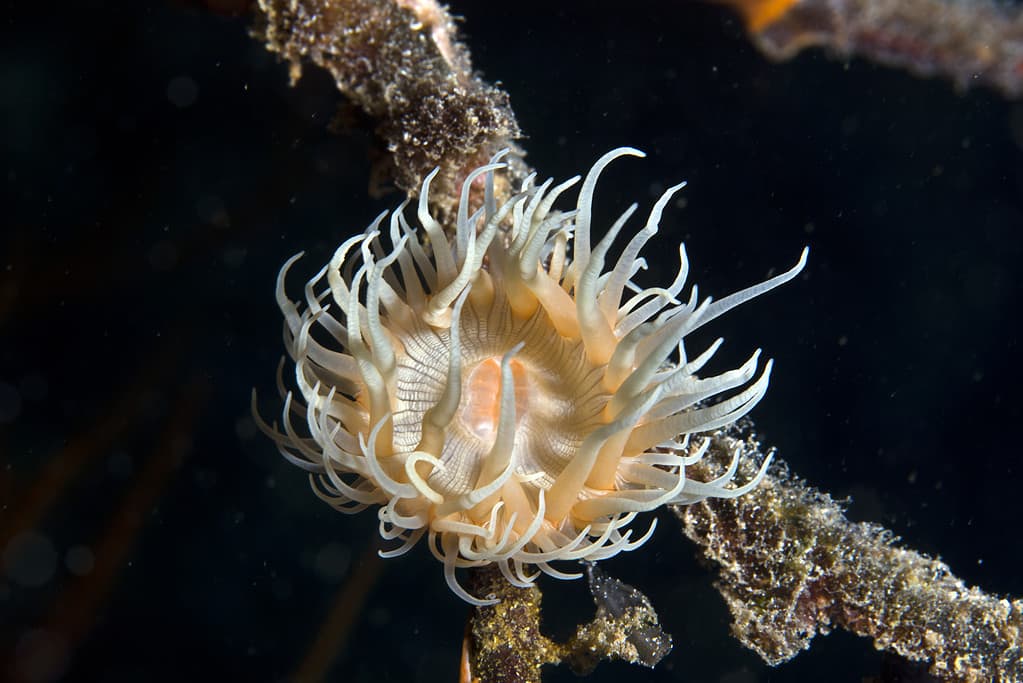A decade ago, some people strolling on a beach in Singapore discovered a 96-armed sea creature. Unbeknownst to them, they had discovered a new venomous species. Researcher Nicholas Yap was sure that this was something that had not yet been discovered and began her search along with a team of researchers for sea anemones along the northern coast of Singapore.
At high tide, the scientists discovered striped sea anemones with their long tentacles spread out in the shallow water. At low tide, the anemones were exposed and available for predators to attack. The anemones then turned themselves inside out, which meant they were using their throats to hide the remainder of their body.
The researchers collected 29 anemones to take back to the lab. After a large amount of comparing other sea anemones to the ones seen on the beach. The group collectively decided this was indeed a new species, which they have named Macrodactyla fautinae, or the tiger anemone.
Meet the 96-Armed Sea Creature: Tiger Anemone (Macrodactyla fautinae)

A Tiger Anemone (Nemanthus annamensis) is similar to the newly discovered Tiger Anemone
(Macrodactyla fautinae).
The tiger anemone is a small creature spanning only three inches wide. It does have 96 venomous tentacles that it uses to catch its meals of small fish. So, it is truly a 96-armed sea creature, it’s just not terrifying and enormous like the myological Kraken. The anemone’s body is a cream color, and what appears to be pinkish warts cover its body. These “warts” have a purpose and shoot water when the anemone contracts. By expelling the unneeded water, the anemone can make itself smaller. It also has 96 smooth textured tentacles with brown and tan banding, which gives it the name tiger anemone.
The sea anemone has scientists stumped as to why it can turn itself inside out, though. It is likely to catch prey since the anemone has areas inside its throat that also contain venom. When its inner throat is exposed, larger prey are attracted and can be caught. If the anemone is in its usual position, it is only able to catch small prey, which is usual for anemones.
The anemones typically live in sandy or silty areas and are not social creatures. So far, sightings of the tiger anemone (Macrodactyla fautinae) have only occurred on the northern shores of Singapore. The good news, other than finding a new species of anemone, is that these little creatures lack nematocyst batteries on their tentacles, which is what the severely painful stings typically come from. It is too early to tell if this new species is harmful to humans, but if they’re anything like their cousins, any sting from them on the tender bottom of your feet will likely still bring tears to your eyes. So, watch your toes if you’re planning on walking along the northern Singapore coastline. The findings about this 96-armed sea creature are located in a research essay on the Zoological Studies site, where there is further information on the tiger anemone (Macrodactyla fautinae).
Thank you for reading! Have some feedback for us? Contact the AZ Animals editorial team.








